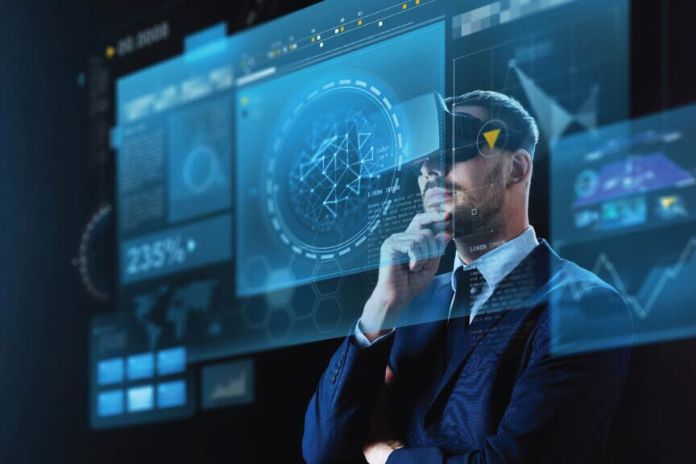Technologies evolve at the same time as science so that Man’s daily life cannot escape it. It even becomes inevitable and unimaginable to live without them. If before, it only affected the telecommunications sector, today it is becoming more and more widespread in various fields: business, industry, and even health.
Among these technologies is the IoT or Internet of Things, which connects physical objects to the Internet. Given the immeasurable flows of data circulating through the world’s networks, it is important to link these innovations to Big Data. Let’s find out together what the challenges and possible applications are.
Big Sata: A Growing Sector
The information area has been on the ascent for quite a while. We can see the developing requests from tech organizations for occupations, for example, Information Investigator, Information Researcher, AI Trained professional, or artificial intelligence Subject matter expert.
For this reason, there are currently an ever-increasing number of specific schools, for example, Information Science Tech Foundation, which trains in Huge Information designing, artificial consciousness, or information examination. These escalated instructional classes can permit individuals to begin in the thrilling universe of enormous information.
What Are The Major Challenges Of The IoT And Big Data?
The IoT and enormous information remain forever inseparable; these innovations coincide with empowering major mechanical advances. The volume of information traded is expanding simultaneously as the quantity of articles associated with the Web is duplicating. This peculiarity of the data blast instigates a continuous development of information. Consequently, the collaboration between IoT and large information will affect innovations connected with these two fields.
As per Statista’s concentrates, if in 2020, the size of advanced information put away on the Web was 64 zettabytes (or 64 billion terabytes), an expected progression of 180 zettabytes for 2025 is assessed. The utilization of enormous amounts of information is, in this manner, urgent for the double-dealing of a lot of voluminous information, the difficulties of which are:
- Securing the information collected. Indeed, most data collected online is personal data from user accounts, consumers, etc. In short, they are natural and legal persons. A leak of the latter is intolerable and can be severely sanctioned by the law, particularly the GDPR.
- Ensure the quality and compliance of data collected through users’ connected devices to obtain relevant information to help companies maximize their products while minimizing production costs.
- Improve the management of big data and its real-time processing to optimize the use of IoT technology. The more information transmitted can be immediately processed and analyzed, the more the IoT can produce reliable and valuable services.
How Can Big Data Be Applied To IoT?
- First, there are several ways to take advantage of IoT big data: in some cases, a quick analysis is enough, while some valuable results are only available after further data processing. Real-time monitoring: Data collected by connected devices can be used in real-time operations: measuring the temperature at home or in the office, tracking physical activities (counting steps, monitoring movements), etc. Real-time tracking is widely used in healthcare (e.g., to take heart rate, measure blood pressure, sugar level). It is also successfully applied in manufacturing (to control production machinery), agriculture (to monitor livestock and plants), and other sectors.
- Data analysis: By processing the big data generated by the IoT, it is possible to go beyond monitoring and obtain valuable insights from this data: identify trends and directions, reveal invisible patterns, and find hidden information and correlations.
- Process control and advancement: Information from sensors gives extra settings to uncover non-trifling issues influencing execution and improving processes.
- Traffic management: monitoring the traffic load at different dates and times to make recommendations to optimize traffic (e.g., increase the number of trains and buses at certain times, see if it’s profitable, advise the introduction of new traffic light patterns and construction of new roads to make some streets less busy and manage traffic jams).
- Retail: when certain goods are almost sold out at a point of sale, supermarket staff are informed, for example, to replenish the shelves with goods.
- Prescient support: Information gathered with associated gadgets can be a dependable hotspot for foreseeing chances and proactively distinguishing possibly difficult circumstances, for instance:
- Health Care: Monitor patients’ condition and identify risks (e.g., which patients are at risk of diabetes, heart attack) to take timely action.
- Manufacturing: predicting equipment failures.
Not all IoT arrangements need large amounts of information. Likewise, not all IoT arrangements require huge amounts of information (for instance, if a savvy mortgage holder switches off the light utilizing their cell phone, this should be possible without large amounts of information). It is critical to consider decreasing unique information-handling endeavors and avoiding colossal information stockpiling, which will be optional from now on.
IoT And Big Data: Technological Innovations At The Service Of Humanity
In this era, digital occupies a prominent place in Man’s life, especially in the company. The use of connected devices, as specified above, allows it to collect data relating to the needs and expectations of consumers. It should certainly be remembered that customers are at the center of its decision-making process. As a result, through this information, it will be able to better orient its marketing strategies according to the latter, which brings it real added value. A real opportunity for her to optimize her performance.
The use of the IoT is expanding and affecting the field of health. We can also see the connected watches that record the parameters of the Man via sensory sensors, which help him to follow and control his state of health (heart rate, blood pressure, etc.). But technological innovations are increasingly advanced and allow, in particular, the teleconsultation of a patient by a doctor, the diagnosis, and the understanding of diseases thanks to big data from IoT sensors. A real revolution in terms of medicine!
Read Also: iOS 17: What New Features Are Expected?

